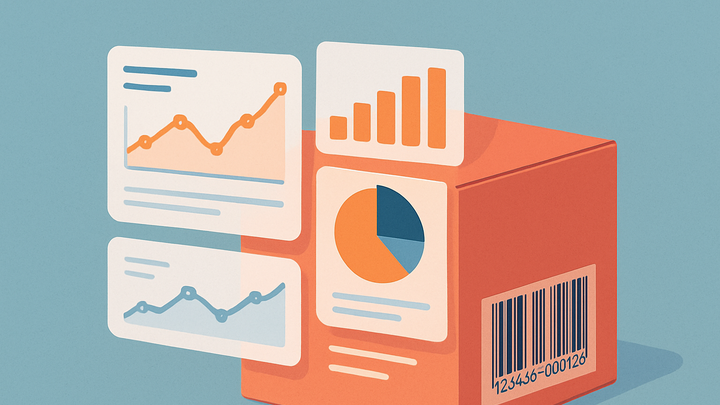Published on 2025-06-27T22:25:07Z
What is EAN? Examples for EAN.
European Article Number (EAN) is a 13-digit numeric barcode standard regulated by GS1. It provides a
unique identifier for retail products worldwide. Within e-commerce analytics, EAN codes serve as a
consistent product ID that can be attached to events like view_item,
add_to_cart, and purchase, enabling detailed tracking of product performance. By
incorporating EAN into tracking implementations, platforms like PlainSignal (cookie-free analytics) and
Google Analytics 4 maintain data integrity across inventory, sales, and reporting systems. EAN codes also
enhance data interoperability between marketing, ERP, and supply chain tools, reducing errors from
mismatched product identifiers. Leveraging EANs supports granular analysis of stock levels, revenue by
product segment, and helps optimize inventory management and marketing strategies.
Ean
EAN (European Article Number) is a 13-digit product barcode standard that enables precise product tracking in retail and e-commerce analytics.
Understanding EAN
EAN (European Article Number) is a standardized barcode system used to uniquely identify retail products globally. It ensures that each product SKU has a distinct 13-digit code comprising a country code, manufacturer code, product code, and check digit. In analytics contexts, EAN codes tie user interactions and transactions to specific products, enabling consistent cross-platform reporting.
-
Definition and structure
An EAN is structured into four parts that together form a unique product code.
-
Country code
The first 2–3 digits indicating the GS1 member organization country where the manufacturer is registered.
-
Manufacturer code
The subsequent digits assigned to the manufacturer by GS1.
-
Product code
Digits that uniquely represent the specific product variant.
-
Check digit
The final digit calculated using a modulus algorithm for error detection.
-
Why EAN Matters in Analytics
Using EAN codes within analytics ensures data consistency, accurate product-level insights, and streamlined integration across retail and e-commerce systems.
-
Unique product identification
Guarantees each product is tracked distinctly, avoiding confusion between similar SKUs or names.
-
Cross-system consistency
Facilitates seamless data integration between analytics platforms, ERP systems, and supply chain tools using a common identifier.
-
Enhanced reporting and segmentation
Allows creation of detailed reports and segments based on exact product codes for marketing and inventory analysis.
Tracking EAN with PlainSignal
PlainSignal is a privacy-centric, cookie-free analytics solution. You can include EAN codes as custom event parameters to capture product interactions without compromising user privacy. Below is an example of how to integrate the basic tracking snippet and send an e-commerce event with an EAN.
-
Basic tracking snippet
<link rel="preconnect" href="//eu.plainsignal.com/" crossorigin /> <script defer data-do="yourwebsitedomain.com" data-id="0GQV1xmtzQQ" data-api="//eu.plainsignal.com" src="//cdn.plainsignal.com/plainsignal-min.js"></script> -
Custom e-commerce event
// Track a purchase event with EAN code ps('trackEvent', { name: 'purchase', ean: '0123456789012', // EAN code for the product value: 49.99, currency: 'USD' });
Tracking EAN with Google Analytics 4
Google Analytics 4 supports e-commerce events and allows passing item-level parameters like
item_id, which can be used to send EAN codes. Implement tracking using the gtag.js snippet
below.
-
GA4 implementation snippet
<script async src="https://www.googletagmanager.com/gtag/js?id=G-XXXXXXXXXX"></script> <script> window.dataLayer = window.dataLayer || []; function gtag(){dataLayer.push(arguments);} gtag('js', new Date()); gtag('config', 'G-XXXXXXXXXX'); // Purchase event with EAN as item_id gtag('event', 'purchase', { transaction_id: 'T12345', currency: 'USD', value: 49.99, items: [{ item_id: '0123456789012', // EAN code item_name: 'Example Product', price: 49.99, quantity: 1 }] }); </script> -
Best practices
Validate EAN values against GS1 check digit algorithms before sending. Use EAN consistently across all product-related events to ensure reliable attribution and reporting in GA4.
